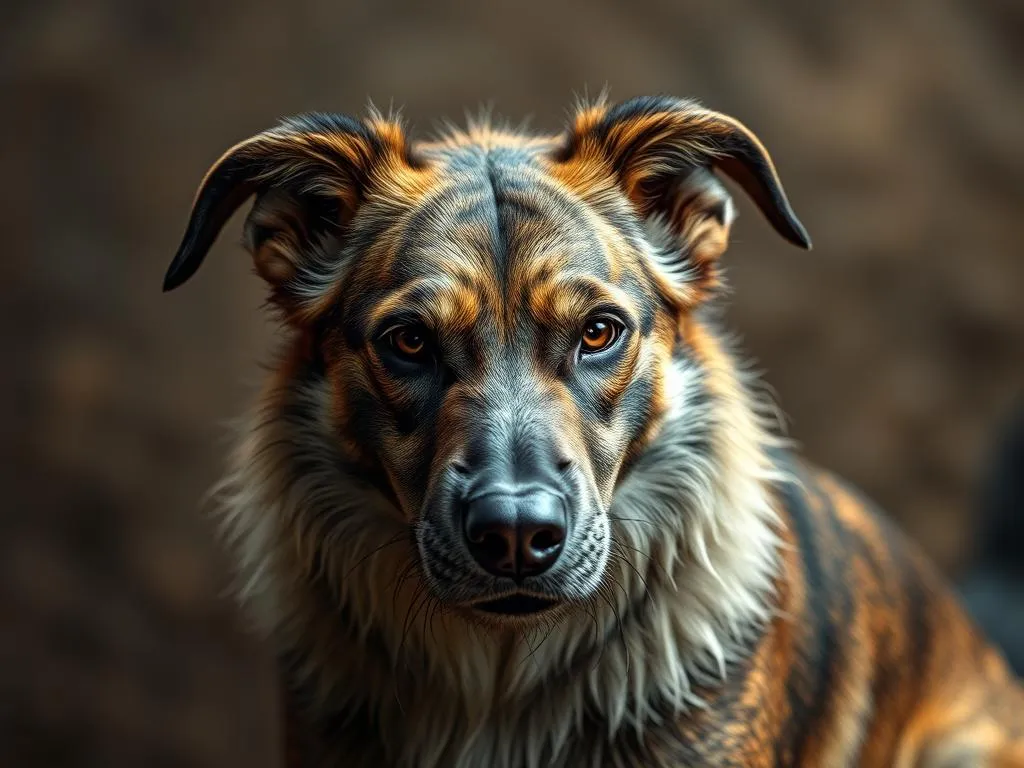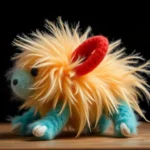
Introduction
In the realm of ancient mythology, few figures evoke as much intrigue as the Cerberus dog. Known primarily as the three-headed guardian of the Underworld, Cerberus plays a pivotal role in Greek mythology, symbolizing both fear and protection. His presence in stories and art throughout history highlights his importance not just as a mythical creature, but as a cultural icon that transcends time. This article delves into the fascinating characteristics, symbolism, and modern-day relevance of Cerberus, shedding light on why this mythical beast continues to capture our imagination.
Understanding Cerberus
Mythological Origins
Cerberus is often depicted as a fearsome, three-headed dog, born from the union of Echidna, the “mother of all monsters,” and Typhon, a monstrous giant. In Greek mythology, he serves a crucial role as the guardian of the Underworld, preventing the dead from escaping and the living from entering without permission. His presence at the gates of Hades signifies the boundary between life and death, reinforcing the importance of his role in maintaining the natural order.
Physical Characteristics
The Cerberus dog is typically depicted with three heads, each one representing a different aspect of existence: the past, present, and future. This triadic form symbolizes the complexity of life and death. In addition to his heads, Cerberus is often illustrated with a serpentine tail and a mane made of snakes, enhancing his terrifying visage. This combination of features sets him apart from other mythological creatures, such as the Chimera or the Sphinx, emphasizing his unique role in Greek lore.
Cerberus in Ancient Texts
Cerberus makes notable appearances in classical literature, particularly in the works of Homer and Virgil. In Homer’s “The Iliad,” he is mentioned as a creature that even the bravest of heroes must face. Virgil’s “Aeneid” further elaborates on his role, depicting the heroic character Aeneas as he encounters Cerberus during his journey to the Underworld. These literary references have cemented Cerberus’s place in ancient art and culture, inspiring countless depictions in sculptures, pottery, and frescoes, each illustrating his formidable nature.
Symbolism of Cerberus
Guardian of the Underworld
As the designated guardian of the Underworld, Cerberus embodies the concept of guarding sacred spaces and secrets. His role in mythology signifies the importance of protecting the dead, ensuring that their passage to the afterlife remains undisturbed. In a broader sense, Cerberus represents the duality of life and death, acting as a protector for souls while simultaneously instilling fear in those who dare to approach his domain.
Representation of Fear and Power
The fear associated with Cerberus is palpable. His fierce appearance and unwavering loyalty to Hades make him a powerful symbol of dominion over death. In many ways, Cerberus represents the innate fears that humans have about mortality, serving as a reminder of the inevitability of death. However, this fear is intertwined with themes of loyalty and protection, showcasing Cerberus as a guardian figure who is both terrifying and noble.
Cultural Interpretations
Throughout history, Cerberus has been interpreted in various ways across different cultures. In some interpretations, he is viewed as a symbol of loyalty, while in others, he embodies the darker aspects of existence. Modern symbolism often draws from Cerberus’s characteristics, influencing representations in cinema and literature where he appears as a formidable yet tragic figure, reflecting humanity’s complex relationship with death and the afterlife.
Cerberus in Popular Culture
Cerberus in Literature and Film
The Cerberus dog has found its way into numerous literary and cinematic works. From Dante’s “Inferno,” where he is portrayed as a gluttonous beast, to films such as “Harry Potter and the Sorcerer’s Stone,” where he serves as a formidable guardian, Cerberus’s depiction continues to evolve. His appearances often serve to heighten tension and illustrate the stakes involved in confronting death or the unknown.
Cerberus in Video Games
In the realm of video games, Cerberus is a popular character, often serving as a boss or significant enemy. Games like “God of War” and “Dante’s Inferno” feature Cerberus prominently, showcasing his fearsome abilities and imposing nature. In these games, players often face Cerberus in combat, which serves not only as a test of skill but also as a representation of overcoming fear and confronting one’s demons.
Cerberus in Art and Merchandise
Artistic interpretations of Cerberus range from ancient sculptures to modern illustrations, each capturing his essence in unique ways. Merchandise, including figurines and collectibles, has also capitalized on Cerberus’s popularity, allowing fans of mythology to bring a piece of this iconic creature into their homes. These representations often highlight the dual nature of Cerberus as both a protector and a fearsome beast, making him a versatile subject for artists and creators alike.
Real-Life Dog Breeds Inspired by Cerberus
Dog Breeds with Mythological Ties
Several dog breeds bear a resemblance to Cerberus, both in appearance and temperament. Breeds such as Mastiffs and Rottweilers are often associated with strength, loyalty, and a protective nature. These dogs, much like Cerberus, possess a commanding presence and serve as guardians for their families. Their physicality and temperament resonate with the Cerberus archetype, making them popular choices for those seeking a loyal companion.
Training and Care of Powerful Breeds
Owning a dog breed inspired by Cerberus comes with its own set of challenges and responsibilities. Proper training and socialization are essential to ensure these powerful dogs are well-behaved and comfortable in various environments. Basic obedience training, consistent exercise, and positive reinforcement techniques are crucial in nurturing a well-rounded dog. Understanding the specific needs of these breeds helps owners foster a strong bond while ensuring safety and harmony in their households.
Cerberus in Modern-Day Conversations
The Role of Cerberus in Psychology
Cerberus’s imagery extends beyond mythology and into the realm of psychology. He often serves as a metaphor for inner demons and challenges that individuals must confront. The fear associated with Cerberus can symbolize personal struggles, and discussing these fears can lead to greater self-awareness and resilience. In this context, the Cerberus dog represents the battles we face within ourselves, urging individuals to confront their fears rather than shy away from them.
Cerberus in Popular Memes and Internet Culture
In recent years, Cerberus has also made a significant impact in internet culture, often appearing in memes that blend humor with his fearsome image. These adaptations showcase the creature in a lighter context, making him relatable and accessible to a broader audience. Internet subcultures utilize Cerberus to symbolize loyalty, strength, or even humor, highlighting the adaptability of mythological figures in contemporary discussions.
Conclusion
The Cerberus dog remains a compelling figure in both ancient mythology and modern culture. From his origins as a guardian of the Underworld to his representations in literature, film, and even psychology, Cerberus continues to captivate our imaginations. His dual nature as both a fearsome protector and a symbol of loyalty serves as a reminder of the complexities of life and death. As we explore the meanings and representations of mythical creatures like Cerberus, we gain insights into our own human experiences, fears, and aspirations, ensuring that his legacy endures through the ages.









